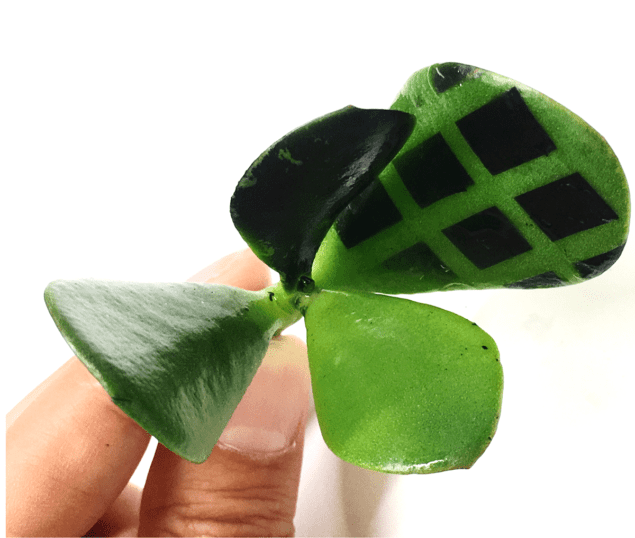
The health of living plants could soon be reliably probed throughout their entire life cycle, thanks to recent research. In work published in Science Advances, a group from the University of Massachusetts at Amherst has shown that conducting polymers applied to the surface of plants can be used as electrodes to detect damage to tissues. This ability to perform long-term, on-demand health tests has huge potential for its effective use in food farming, crop management and biohazard signalling.
Health monitoring devices have previously stuck electrodes to the organism by applying a film to the surface. However, these can suffer problems with longevity as they are susceptible to peeling off the organism. They can also perturb transport of air, water and nutrients at the surface, meaning they are not feasible for long term use. Now, the group led by Trisha Andrew has taken a novel approach to applying a thin, robust and durable coating by vapour-printing the polymer electrodes.
Vapour-printing
The team showed that introducing vapours of an oxidant and polymer building blocks into a reactor at room temperature led to growth of a conducting polymer film on any exposed surface, without harming the plant. They printed the functional polymer films directly onto the surface of live seedlings, resulting in long-lasting electrode pads.
Despite the complex and varied surfaces of plants, the vapour-printing method evenly coated all of the plant specimens without blocking any pores in the leaves. Unblocked pores are required for normal mass transport processes and therefore long-term use of the coating. The team proved that this vapour coating process did not perturb any biological functions, showing that coated flowers were able to uptake air, water and nutrients just as well as uncoated flowers.

Bioimpedance as a signal
The vapour-printed coatings displayed conductivities high enough for the group to use them as electrodes for bioimpedance spectroscopy in order to measure the health of living plants. This is a sensitive technique that can measure the water content of cells and reveal details about the composition of cell walls.
The researchers were able to detect damage resulting from drought and UV damage by identifying different components of the impedance. This includes the intrinsic conductivity of the coating, the capacitance due to the insulating leaf epidermis, and the ion diffusion between leaf cells and the coating. Crucially they were able to distinguish between different types of damage using the impedance measurements.
Detecting the damage
When they gradually dehydrated leaves of a pothos plant in a vacuum oven, the group observed a significant decrease in the capacitance of the cell membrane and resistance of the extracellular fluid (fluid not contained in cells). This was due to the cell membranes breaking down, causing the ion-rich intracellular fluid to leak out into the extracellular fluid. A 13% drop in the water content in leaves resulted in a 70% decrease in membrane capacitance, demonstrating superior precision to existing methods used to remotely detect drought stress.
As well as water loss, ultraviolet A radiation is also capable of causing deep tissue damage to plants, particularly the hosta plant, a shade-loving perennial. This kind of photodamage can often go undetected by conventional on-surface detection systems. However, the Massachussets group also showed that they could identify photodamage by monitoring bioimpedance of leaves coated with the vapour-printed electrodes after exposing leaves of the plant to UVA radiation. In this case, the measurements were able to identify deep tissue damage from a huge increase in the resistance of the fluid inside vacuoles (storage organelles inside cells). In contrast to damage caused by dehydration, the research showed an increase in membrane capacitance, highlighting the ability of this technology to distinguish between stressors, which is essential for health-monitoring.



